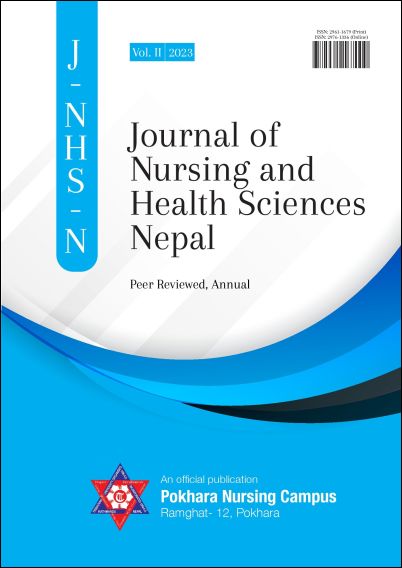Gender Preference of Child among Married Women of Reproductive Age Group Residing in Syangja
DOI:
https://doi.org/10.3126/jnhsn.v2i1.66472Keywords:
Gender preference, reproductive age group, married women, SyangjaAbstract
Introduction: Gender preference is the desire of biological parents for either a male or female child. Preferences for sons over daughters among Nepali families are still strong, though there are various measures adopted to discourage gender discrimination. There are many couple who prefer a male child because a son is culturally, economically and socially more desirable than a daughter. This study aims to assess the specific gender desire among married women of reproductive age group living in Syangja.
Methods: A descriptive cross sectional study design was adopted for conducting this study among 122 married women of reproductive age group. The tool consisted of demographic proforma, reproductive behavior questionnaire and preference questionnaires. Data was collected by web-based system using online Google Form using non probability convenience and networking sampling technique. The data was analysed using SPSS 16 package.
Results: The average age of the women was 29.63 years with the standard deviation of 7.5. Majority (82%) of the respondents were married after their 20th birthday. One in five of them (18.9%) had history of abortion. Three quarter (75%) had no specific gender preference for child followed by female preference (15%) which was significantly associated with education of the respondents (p ꞊ 0.032) and respondent’s husband (p ꞊0.017) use of contraceptive devices(p=0.035).
Conclusions: The study concludes that the gender preference has shifted from son preference to daughter preference which was significantly associated with education level of couple which can be sustained through increasing education level and women empowerment.
Downloads
Downloads
Published
How to Cite
Issue
Section
License
Copyright (c) 2023 The Author(s)

This work is licensed under a Creative Commons Attribution 4.0 International License.
This license enables reusers to distribute, remix, adapt, and build upon the material in any medium or format, so long as attribution is given to the creator. The license allows for commercial use.




